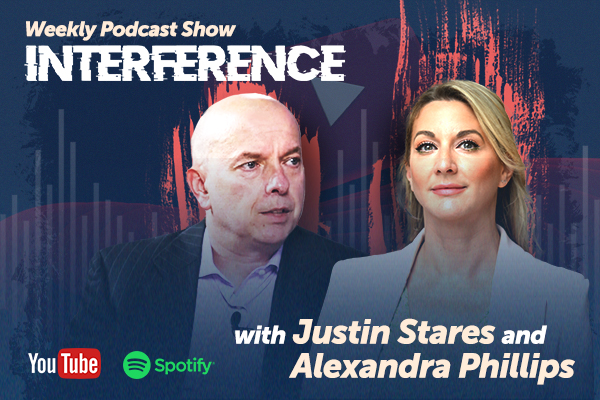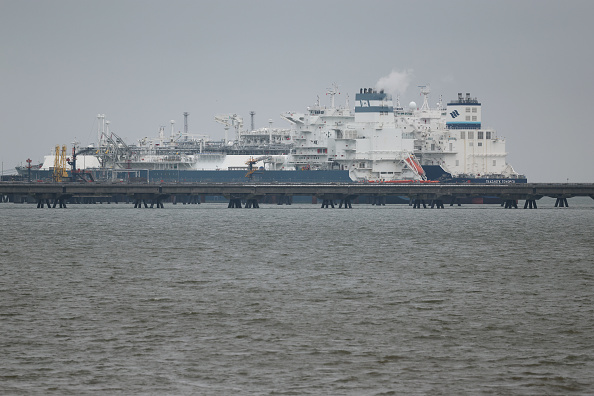It may not have been well-publicised in Europe, but the combination of the sudden temporary resolution and de-escalation of the tariff imbroglio between the United States and China has gone a considerable distance to legitimising the apparently brusque method of President Trump’s policy to eliminate the completely unjustifiable and ultimately unsustainable US trade imbalance of $1.2 trillion.
The contemporaneous revelations of higher than expected job creation in the United States and substantially lower than expected inflation have been, at the least, a serious temporary embarrassment of those commentators in Europe and America who have been shrieking alarms as if their hair was on fire about where Trump’s policies might lead. In the first day of his visit to Saudi Arabia, where he announced his expectation of the confirmation of $600 billion to be invested in the US and the crown prince topped that up to over $1 trillion; all this augers powerfully for the success of his slightly unorthodox economic policies.
The American trade deficit arose because of the strategically justifiable Cold War policy of incentivising politically unreliable or vulnerable countries to align themselves with the US and its allies and not with its Sino-Soviet opponents. The end of the Cold War made this policy obsolescent, but like almost all public policy, it had a momentum of its own and carried the American trade deficit to unheard of depths before the frontal assault of the present administration. There is no doubt that many countries were singly or collusively conducting a comprehensive pocket-picking exercise against the US, which is such an economic powerhouse that the world surplus on trade with the US was largely reinvested in that country — its economy is after all so large that there was no significant concern about the level of foreign ownership that resulted.
Thus, strategically and just in ethical terms, it was perfectly correct for this president to assault this deficit as he has. The fact that there are approximately 130 countries engaging now in negotiations with the US to revise their trade arrangements or who have signified their wish to do so, incites optimism that America’s trading relations will be put on a solid footing quite quickly. Not one of those countries could conceivably imagine that they are likely to emerge from current or pending negotiations with a more favourable trade arrangement for themselves than they already enjoyed with the US.
The extraordinarily positive stop in Saudi Arabia, along with other enactments of American Middle East policy of the last three months, augur well for a brightening horizon in that always complicated region. President Trump reiterated that either the Iranians will dismantle their military nuclear programme or he will do it for them. Fears expressed in Israel and elsewhere that he might be softening on this matter are unfounded and the world knows enough about Trump to know that he will go to any lengths to ensure that he is not stared down, outplayed, or otherwise embarrassed by the primitive and brutal theocracy in Teheran. The Iranian terrorist proxies, Hamas, Hezbollah, and the Houthis have all been humbled and severely defeated and Iran has been unceremoniously expelled from Syria. Arab powers, and particularly Saudi Arabia, have made it unmistakably clear that they would be grateful if the US were to relieve them of the spectre of the ayatollahs gasconading about with deliverable nuclear weapons like Kim Jong Un. Both President Trump and Israeli Prime Minister Netanyahu have stated that this will not happen and both men on this subject can be taken at their word.
However worrisome the past of the current Syrian leader, Ahmed al-Sharaa — and it is steeped in the most malignant terrorist associations — he has attracted the patronage of the Saudi Arabians who vouch for his future respectability. Trump’s removal of the long-standing economic boycott of Syria must be seen as an important step forward in the stabilisation of that horribly ravaged country, and in the development of what is emerging as a Washington-Riyadh alliance, parallel to the Washington-Jerusalem alliance, and the existence and continuing growth of those two relationships are the most plausible bases for increasing stability in that region that have existed since the brief shining moment when the Shah of Iran and President Sadat of Egypt were both firmly in office and working with Richard Nixon and Henry Kissinger more than 50 years ago. (After the Suez crisis, President Eisenhower tried to build up the Saudis as a rival to Egypt’s Nasser, but they were too primitive and phlegmatic. The present crown prince has changed that.)
There is room for optimism that the American president and the Saudi crown prince, who despite the difference in their backgrounds and ages are both modernisers, original thinkers, ambitious statesmen, and transactional personalities, may be building an association whose aim will be normalisation of relations between Israel and Saudi Arabia, the complete taming and emasculation of the hideous regime in Tehran (hopefully inducing local elements to overthrow it and replace it with something appropriate to the 21st century in a historically important country) and some attention to Palestinian matters that includes the movement out of Gaza and perhaps even part of the West Bank of Palestinians enticed to a better and safer nearby place. The reconstruction of Gaza as something other than the teeming breeding ground of terrorist violence that it has been for 75 years could then begin.
In the light of the events of the last week, these are increasingly reasonable possible outcomes of the unfolding and innovative policymaking of the returned American president.





Arab and Israeli civilisation gaining ground against Iran